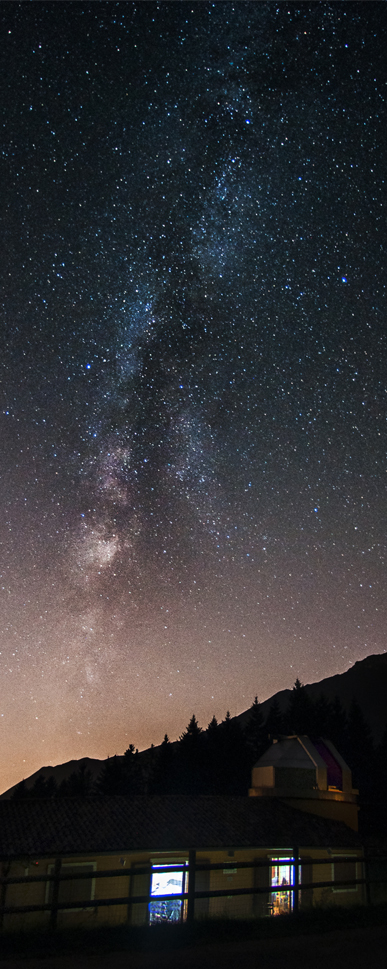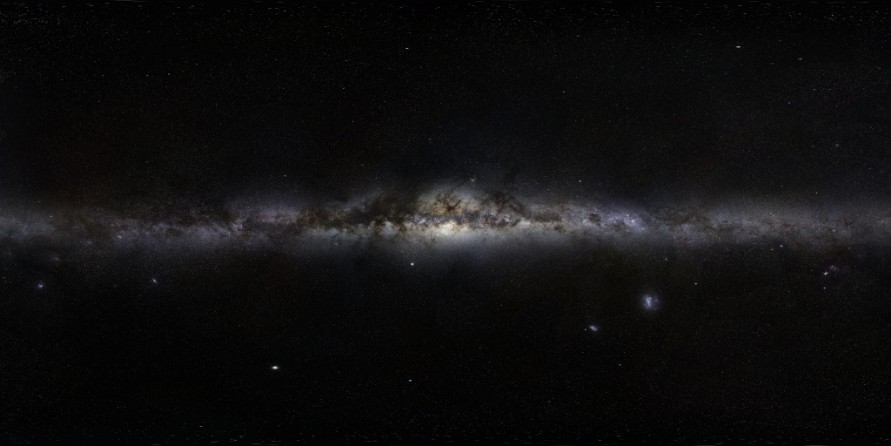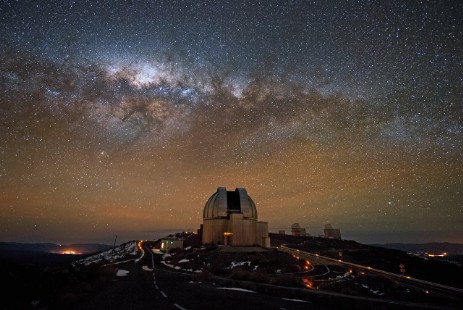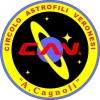Il cielo non è mai
stato così vicino
Sembra incredibile, ma basta solamente una serata limpida e particolarmente buia che sembra di toccare il cielo con un dito. E' quello che è successo una serata in Osservatorio Monte Baldo "A.Gelodi" dove la nostra galassia, la Via Lattea, ha dato spettacolo. Un nostro socio è riuscito a cogliere quest'attimo per ricordarlo nella nostra memoria. Davvero a Novezzina il cielo non è mai stato così vicino.
The sky has never been so close
It sounds incredible, but just a clear and particularly dark night that seems to touch the sky with a finger. This is what happened on a hight at Monte Baldo Observatory "A.Gelodi" where our Galaxy, the Milky Way, gave a show. Our partner Fabio has succeeded in capturing this moment to remember it in our memory. Really in Novezina the sky has never been so close.
Crediti: OMB, F.Zoccatelli
La Via Lattea
Questa stupenda foto panoramica a 360 gradi, che copre l'intero emisfero celeste del sud e del nord, rivela il paesaggio cosmico che circonda il nostro piccolo pianeta blu. Questo fantastico paesaggio e' il primo di tre immagini ad estrema alta risoluzione nel progetto GigaGalaxy Zoom, lanciato da ESO durante l'anno internazionale di atronomia nel 2009 (IYA2009). Autore della splendida immagine è Serge Brunier. Per saperne di più...
Milky Way Galaxy
This magnificent 360-degree panoramic image, covering the entire southern and northern celestial sphere, reveals the cosmic landscape that surrounds our tiny blue planet. This gorgeous starscape serves as the first of three extremely high-resolution images featured in the GigaGalaxy Zoom project, launched by ESO within the framework of the International Year of Astronomy 2009 (IYA2009). Image's author is Serge Brunier. More info...
La Via Lattea
La Via Lattea è una galassia a spirale barrata con un diametro compreso tra 100.000 e 180.000 anni luce. Si stima che possa contenere tra 100-400 miliardi di stelle. Il Sistema Solare è situato nel disco, a circa 27.000 anni luce dal centro galattico, in un braccio delle spirali con concentrazione di gas e polveri chiamato Braccio di Orione. Le stelle entro i 10.000 anni luce dal nucleo formano il bulge e uno delle barre che partono dal nucleo. Il centro della galassia è caratterizzato da una forte radio sorgente, chiamato Saggitario A, che sembra essere un supermassiccio buco nero... Per saperne di più...
Milky Way Galaxy
The Milky Way is a barred spiral galaxy with a diameter between 100,000 light-years and 180,000 light-years. The Milky Way is estimated to contain 100–400 billion stars. The Solar System is located within the disk, about 27,000 light-years from the Galactic Center, on the inner edge of one of the spiral-shaped concentrations of gas and dust called the Orion Arm. The stars in the inner ≈10,000 light-years form a bulge and one or more bars that radiate from the bulge. The very center is marked by an intense radio source, named Sagittarius A*, which is likely to be a supermassive black hole... More info...
La Silla: L'osservatorio di La Silla si trova ai margini del Deserto di Atacama, a 600 km a nord di Santiago del Cile e a un'altitudine di 2400 metri slm. Come altri osservatori in questa zona, La Silla è situato lontano da sorgenti di inquinamento luminoso e, come l'Osservatorio del Paranal, sede del VLT, ha uno dei cieli notturni più bui della Terra. La Silla è una roccaforte dell'ESO sin dagli anni '60. Qui l'ESO gestisce due telescopi della classe dei 4 metri, fra i più produttivi al mondo. Per saperne di più... Image Credit: ESO
La Silla: The La Silla Observatory is located at the outskirts of the Chilean Atacama Desert, 600 km north of Santiago de Chile and at an altitude of 2400 metres. Like other observatories in this geographical area, La Silla is located far from sources of light pollution and, like the Paranal Observatory, home to the Very Large Telescope, it has one of the darkest night skies on the Earth. La Silla has been an ESO stronghold since the 1960s. Here, ESO operates two of the most productive 4-metre class telescopes in the world. More info... Image Credit: ESO
Sistema Solare Interno Mercurio Venere Terra | Sistema Solare Esterno | Via Lattea | Universo Supernova Extragalattiche |
Prenota la mostra per i tuoi eventi (da novembre 2017) | |||









































